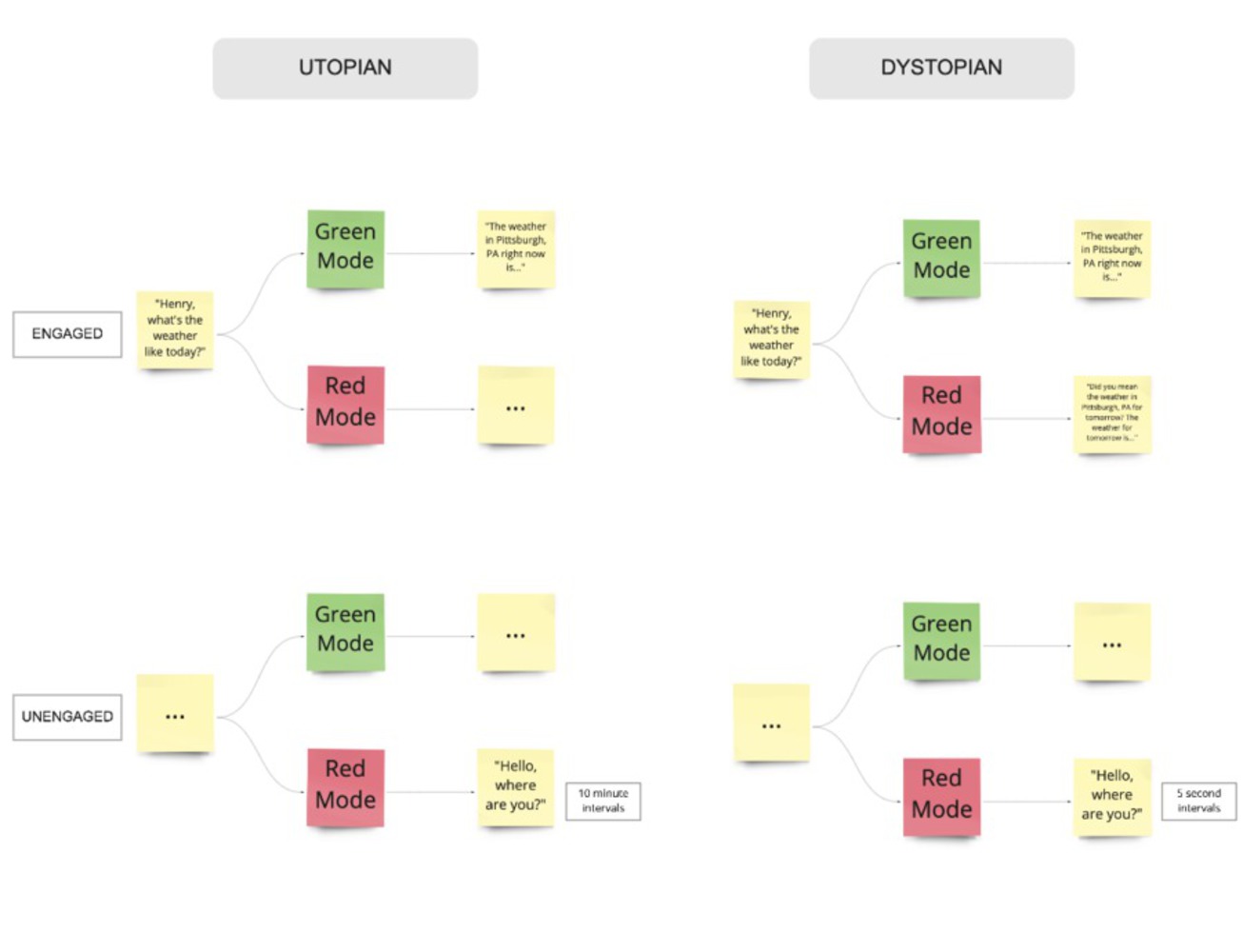Intention
Write about the big ideas behind your project? What are the goals? Why did you make it? What are your motivations?
The intent of this project is to emphasize the intimacy between users and their devices. As a generation heavily dependent on technology, we wonder how far have we internalized its ‘spookiness”? This project underscores the personal relationships we build with our technology and the spookiness of this attachment. We are proposing a dystopian alternative where the attachment and reliance on our devices have become mutual. What if our technology was just as dependent on us? We wonder if users would be more cautious and intentful of their devices if we personified the device to mimic the dynamic relationship between humans. By incorporating emotion-like features and unpredictableness, we call attention to the blind trust we have in our technology.
Furthermore, we question the true objective nature of our technology. Our blind trust in our devices has blurred the importance of consent. We view everyday devices like the Alexa as harmless magic boxes to make our lives easier. This project also brings intentful awareness of our devices by eliminating the guaranteed accuracy and ‘good intent’ of our devices.
DEMO VIDEO: https://drive.google.com/file/d/1jwKq62tllw7bvg3XK0pZYsee3DcqNoYg/view?usp=sharing

